Some people are as known for their fashion choices as they are their full-time jobs. Monty Don, the British gardener, and Andy Burnham, a politician, are both associated with navy cotton workers’ jackets. Model Kate Moss is usually wearing a cropped, black leather jacket; Alexa Chung is often wearing 15-denier tights and a Peter Pan collar. James Dean was all about the fitted white T-shirt, while Michelle Obama became renowned for her sleeveless outfits that gave airtime to her toned arms, and the late Queen Elizabeth II dressed head-to-toe in one singular colour.
Fashion is a powerful communicator, and for habitual wearers, specific garments, or categories of clothes, become a part of their identity. For many celebrities over the decades, that gravitation has been towards knitwear. For some, it’s a silhouette — think Audrey Hepburn and Steve Jobs’ preference for the understated allure of the sleek black roll neck, like John Smedley’s best-selling Catkin or Richards knits, for example. For others, it’s a signifier — on Friends, Chandler Bing’s patterned grandad knits grounded his look in the ‘Everyman’ character, making his age as indistinguishable as his actual job. Some knits are so famous they can define a whole decade: Kurt Cobain’s baggy cardigan, worn on MTV Unplugged, became the ultimate expression of Nineties grunge, with its holes, cigarette burns and oversized nonchalance.
No matter the era, knitwear continues to captivate across the decades — as these knitwear icons so aptly demonstrate.
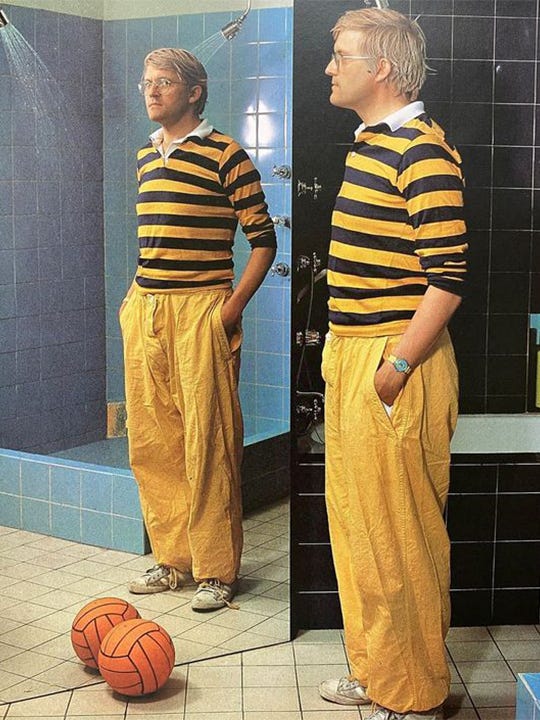

David Hockney
The Yorkshire-born artist is renowned for his use of on-canvas colour, and his on-rotation knitwear is as technicolour as his paintings. Hockney’s signature style is arguably an early iteration of what is now known in menswear as modern prep: all wide-legged trousers, collegiate staples and popping accessories, with a loose but refined edge. Knits are his go-to up top: he prefers slimline merino cardigans, knitted long sleeve polo shirts and rugby tops in hues of turquoise, yellows, pinks and whites. John Smedley’s Finchley polo shirt in Sea Island Cotton is his favoured item to layer with colourful cardigans such as the Bryn style.
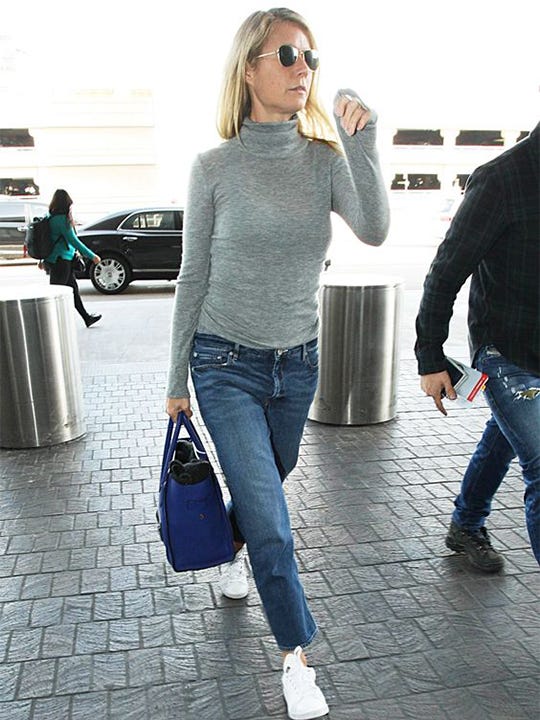

Gwyneth Paltrow
Nineties minimalism was defined by its clean, architectural silhouettes that riffed on Manhattan’s urban skyline, and knitwear’s role was to be the sleek foundation upon which to build a look. Gwyneth Paltrow knows this well: the American actor’s enviable closet throughout the decade is still cited in best-dressed lists today. Her go-to knits included roll necks in black, taupe, and charcoal greys, as well as collared, loose cardigans — paired with crisp leathers, Paltrow brought a whole new edge to woollens, showing its versatility and day-to-dark sensibility.
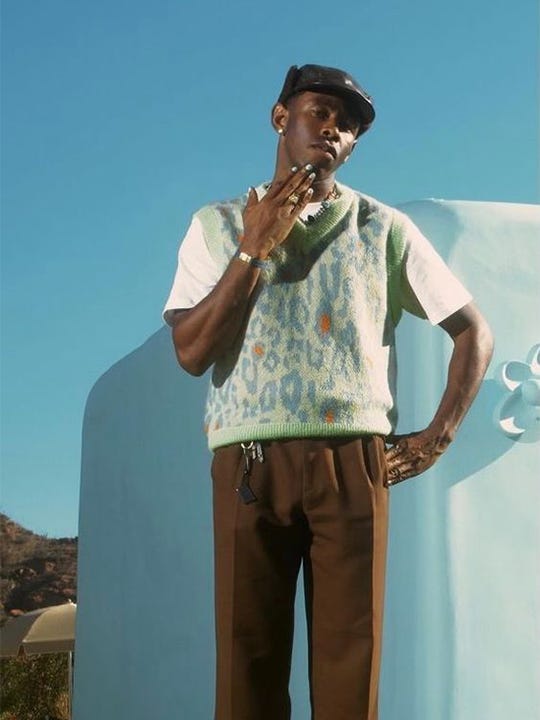

Tyler, the Creator
One of the most playful participants in the celebrity menswear arena today, Tyler, the Creator, is forever having fun with fashion. The rapper has amassed a steady collection of Argyle knits, which riff on the golf course but in more fantasyland hues — they’ve become a crucial part of his nerd-chic image. So too have sleeveless vests and cricket-style sweaters: he favours the lesser-worn V-neck sweater silhouette, in enthusiastic colourways which are often layered over T-shirts. Knitwear may be timeless, but Tyler proves it doesn’t have to be muted. The Bobby jumper would arguably be his style of choice, especially given its availability in 25 shades per season.
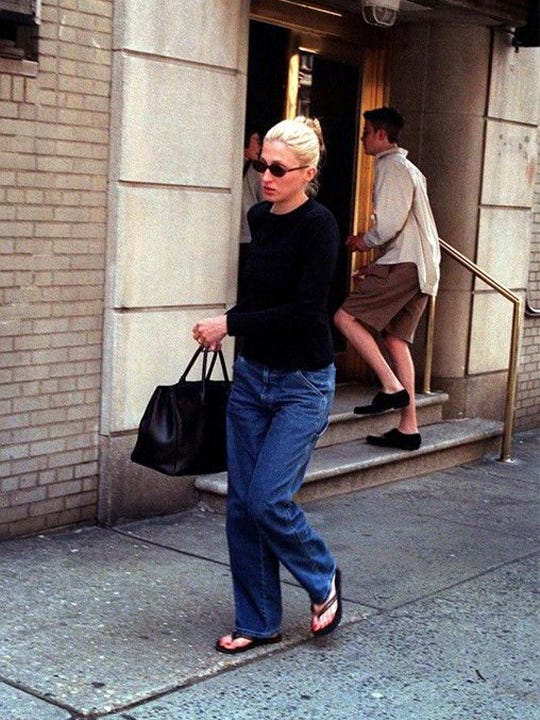

Carolyn Bassette Kennedy
A stalwart of the New York fashion scene in the Nineties, Carolyn Bassette Kennedy’s style was all about the everyday basics: think crisp white T-shirts, straight-leg jeans, and button-up shirts. As for her knitwear, she wore black crew-neck sweaters like a uniform. Whether tied around her shoulders like a drapey cape or slipped on over shirts for trips to the airport, Bassette Kennedy’s approach to layering proves not just how versatile a knit is in the modern wardrobe, but how a simple sweater can also be styled as a statement accessory. Emulate her take with the slimline Geranium merino wool jumper, which is fully-fashioned, and features dropped, seam-free shoulders for a sleeker look. For a more relaxed fit, women could opt for the men’s Marcus.
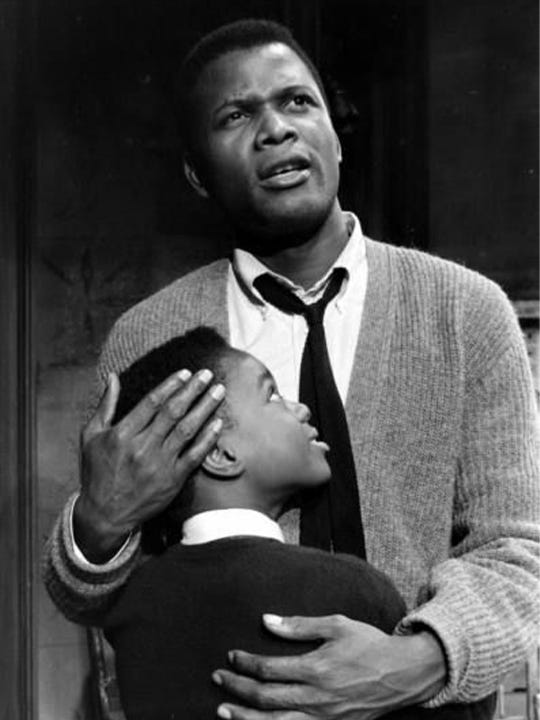

Sidney Poitier
Actor, civil rights activist, director and businessperson, the Academy Award-winning legend Sidney Poitier needed his wardrobe to work hard for him. And while his multi-hyphenate career meant he was regularly sporting a shirt and tie, it was his off-duty knitwear which really telegraphed the warm, relaxed demeanor he became known for. Poitier loved a sweater vest, and a pastel-coloured cardigan — both looked cosy layered over his business dress, and still speak to the more casual modes of office dress of today. Look for chunkier cardigans or knitted jackets that hold their shape, with loose fits that slip on easily over shirts.
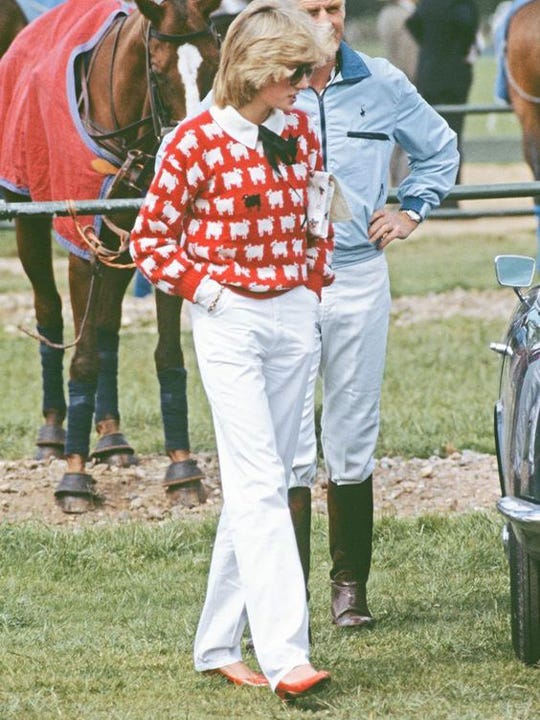

Princess Diana
If ever there was a case to make the novelty knit chic, then Princess Diana would no doubt inspire the vote in its favour. From pretty Fair Isle hand-knitted sweaters to those decorated with sheep and dainty flowers, the late Princess knew an outfit could say a thousand words, and her expressive sweaters were a way of her communicating to the world her personality through a photograph. Paired with preppy cotton chinos, her look was simultaneously retro yet modern — and one that’s oft-emulated today, showing the staying power of a statement knit.
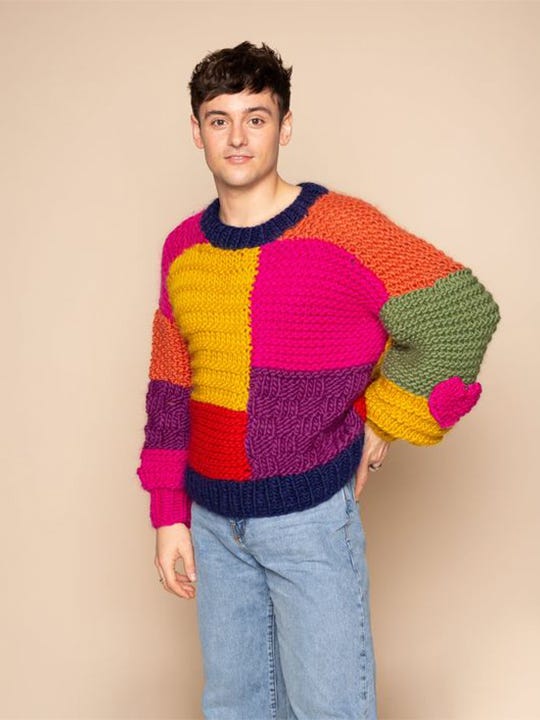

Tom Daley
The British Olympic diver started knitting as a cathartic salve for daily stress — and instantly brought about a new buzz for this ancient handcraft from younger, digital natives. Today, he’s as known for his chunky sweaters as he is for lofty plunges into the pool: his Instagram account is filled with engaging reels of his in-process wares which are often made using yarn of British wool — which aligns with John Smedley’s ethos and in particular its British wool garments, which were crafted using the fleeces of sheep from the Duchy Estate in Cornwall. In promoting his knitting, Daley is bringing attention to the sustainability of sweaters, the organic nature of slow-craft and, as a hyper-local garment, knitwear’s tactile and emotional resonance in the closet.




